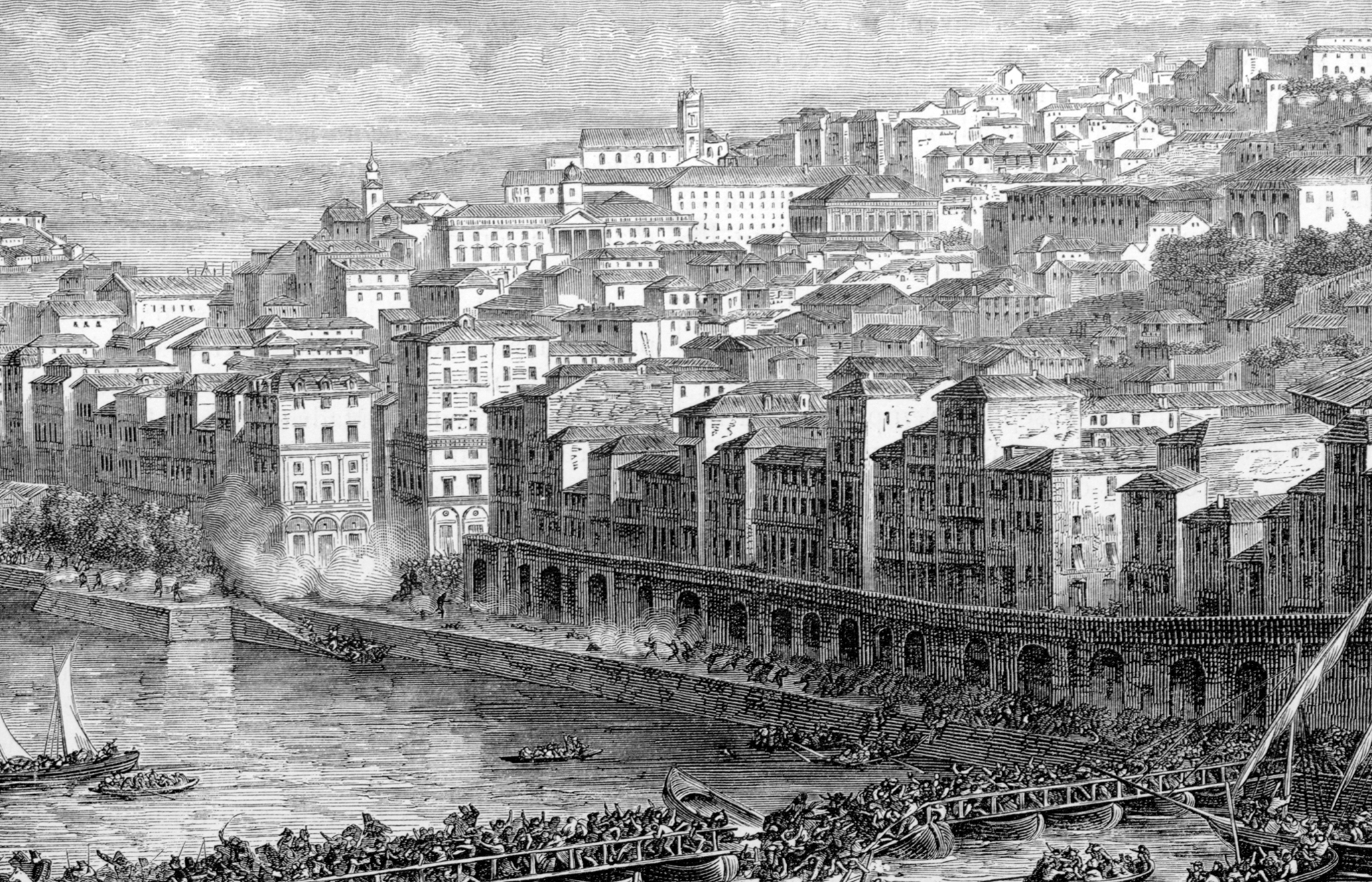MOMENTS IN HISTORY
1. 2nd Century BC: Roman Times
Rome battled the Celtic Lusitani for the lands between the Douro and Tagus from 194 BC to 19 BC, when it completed its conquest. Porto, known as Portus Cale, became a regional entrepôt of the empire.
2. 868: County of Portugal
Spanish nobleman Vímara Peres liberated Porto from the Moors, who had conquered Portugal in 711, to create the County of Portugal, a vassal state of the Kingdom of Asturias in northern Spain.

Statue of Vímara Peres on horseback
3. 1386: Treaty of Windsor
The Treaty of Windsor and dynastic marriage to Philippa, daughter of John of Gaunt, Duke of Lancaster, secured King João I the Portuguese throne. Under João, who ruled until 1433, Portugal began an era of overseas exploration and imperialism, starting with the Conquest of Ceuta in Morocco in 1415 and the discovery of Madeira and the Azores.
4. 1580-1640: Spanish Rule
Spain seized Portugal after the childless King Henrique died in 1580 and ruled until 1640, when João, Duke of Braganza, became King João IV.
5. 1703: Port Wine Treaty
England and Portugal signed a treaty in 1703 that limited the import duty on Portuguese wine in return for tax-free export of English cloth to Portugal, giving a large boost to the city’s port wine trade with England.
6. 1809: Ponte das Barcas Disaster
French troops under Napoleon’s Marshal Soult invaded Portugal in 1809, taking the city in the March of that year. Thousands fled the city, but many drowned when the Ponte das Barcas, a pontoon bridge of 20 rafted barges stretching across the Douro, collapsed leaving 4,000 dead. Two months later, on 12 May, British troops liberated Porto.

Illustration of the Ponte das Barcas disaster in 1809
7. 1832: Siege of Porto
Liberal supporters of Dom Pedro were besieged in Porto by troops loyal to the absolutist Dom Miguel I. A bloody civil war ensued, and after 13 months of conflict that saw extensive damage to the city and significant loss of human life, the Liberals eventually declared victory the following year.

Painting of the Siege of Porto
8. 1985: Barragem de Crestuma-Lever
The completion of the Crestuma-Lever Dam, the last of five dams built since the 1960s, made it possible for larger vessels to navigate the River Douro all the way upstream from Porto to Barca d’Alva on the Spanish frontier.
9. 1996: Porto’s Historic Centre Declared World Heritage Site
In 1996, the area within Porto’s 14th-century Fernandine city walls was declared a UNESCO World Heritage Site. The recognition also embraces the Monastery da Serra do Pilar and Ponte Dom Luís I.
10. 2005: Construction of the Casa da Música
Designed by renowned Dutch architect Rem Koolhaas, the spectacularly modern €100-million Casa da Música was commissioned when Porto was named European Capital of Culture in 2001, raising the city’s worldwide cultural profile further still.
TOP 10 HISTORICAL FIGURES
1. Vímara Peres (d 873)
An Asturian nobleman, Peres expelled the Moors from Porto and became the first Count of Portugal.
2. Philippa of Lancaster (1360–1415)
A member of England’s ruling house, Philippa married King João I by proxy at the Sé in 1387.
3. Henry the Navigator (1394–1460)
A younger son of João I, Dom Henrique launched the first of Portugal’s great voyages of exploration.
4. Arthur Wellesley (1769–1852)
Later Duke of Wellington, Wellesley captured Porto in 1809 and drove the French from Portugal.
5. Dom Pedro I (1798–1834)
Known as “The Liberator”, Pedro I led the Brazilian secession from Portugal in 1822 and declared himself emperor.
6. Almeida Garrett (1799–1854)
A poet and playwright, Almeida Garrett penned works in support of the 1820 Liberal Revolution.
7. Guerra Junqueiro (1850–1923)
The work of this antimonarchist and anticlerical politician and author aided the creation of the Portuguese Republic.
8. “La Ferreirinha” (1811–96)
Vineyard heiress Antonia Ferreira took over the family business and became prominent in the Douro wine industry.

Portrait of “La Ferreirinha”
9. Gustave Eiffel (1832–1923)
The French engineer designed Porto’s iconic Maria Pia and Luís I bridges.
10. Manoel de Oliveira (1908–2015)
The father of Portuguese cinema, Manoel de Oliveira made many films set in Porto and the Douro region.

